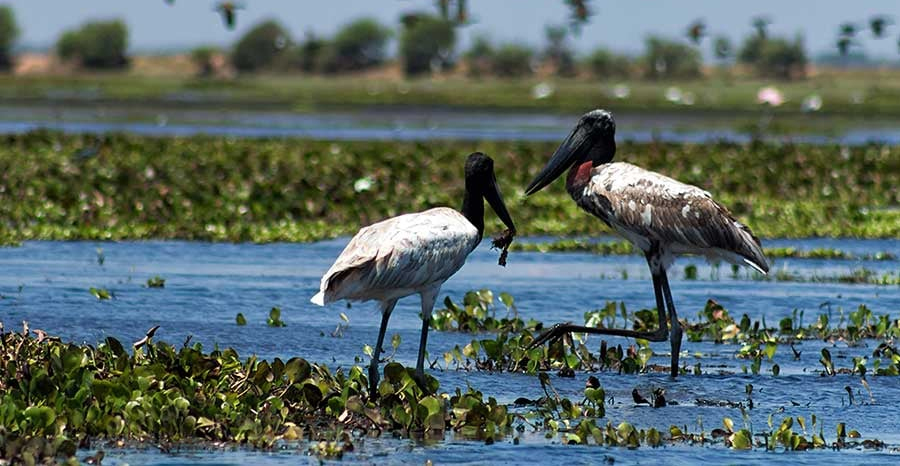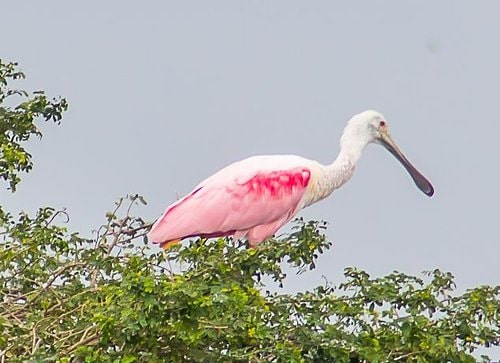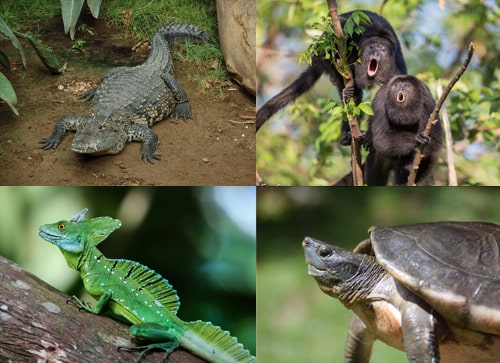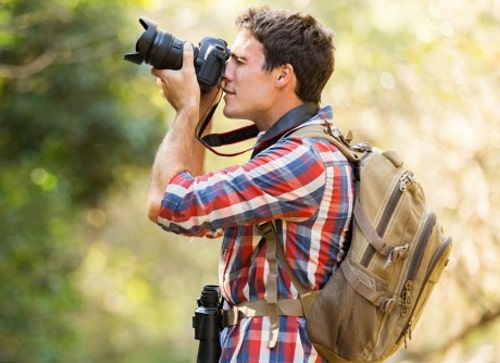Quick Links: About Us - Contact Us

Hidden among wetlands and savannah just northwest of Belize City lies a birdwatcher’s dream: Crooked Tree Wildlife Sanctuary. Managed by the Belize Audubon Society and recognized internationally as a Ramsar Wetland of Importance, this sprawling sanctuary is more than just a destination—it’s a living, breathing ecosystem.
July may fall in Belize’s rainy season, but that doesn’t mean it’s a bad time to visit. In fact, the lush landscapes and returning bird activity can make for an incredibly rich and peaceful experience. With fewer crowds, vibrant scenery, and dramatic skies, July offers a quieter and more intimate introduction to Belize’s natural treasures.
In this guide, you’ll discover what species to expect, how to plan your visit, and a few tips to make the most of your journey into this conservation haven.
About Crooked Tree Wildlife Sanctuary
Crooked Tree Wildlife Sanctuary covers more than 16,400 acres of wetlands, lagoons, logwood swamps, and pine savannahs. The sanctuary surrounds the village of Crooked Tree and includes the largest inland lagoon in Belize, making it a critical nesting and feeding area for countless bird species.
Founded in 1984 and managed by the Belize Audubon Society, the sanctuary is internationally recognized for its role in protecting migratory birds and local wildlife. It’s particularly famous for the Jabiru stork, one of the largest flying birds in the Western Hemisphere.
In July, the rainy season brings out a different rhythm in the sanctuary—lush vegetation, active amphibians, and a symphony of bird calls at dawn.
Wildlife You’ll See in July

Birds to Watch:
- Snail Kites: These raptors are often seen gliding low over the wetlands in search of apple snails.
- Northern Jacanas: With their long toes and striking plumage, they’re a highlight of any trip.
- Black-bellied Whistling Ducks: Their high-pitched calls are easy to recognize before you even see them.
- Kingfishers & Herons: The waterways come alive with little blue herons, green herons, and belted kingfishers perched and poised.
- Gibnut & Woodrails: Often hidden, but sometimes seen darting across the trail or foraging near water’s edge.

Other Wildlife:
- Morelet’s Crocodiles: Frequently spotted basking near lagoon shores.
- Howler Monkeys: Their calls echo across the canopy during dawn and dusk.
- Green Iguanas & Basilisk Lizards: Look for them resting on branches or skimming over the water.
- Turtles & Small Mammals: Including agoutis and armadillos, especially during quiet morning walks.
July also welcomes early migrants from North America. Keep your binoculars ready—surprises are always possible here.
Best Time to Visit During the Day
The early morning (5:30 AM – 9:00 AM) is the golden window. This is when bird activity is highest, temperatures are comfortable, and the light is perfect for photography.
The late afternoon (4:00 PM – 6:00 PM) is also rewarding, especially for those hoping to photograph against the warm glow of the setting sun.
Avoid mid-day hours, when both wildlife and humans tend to seek shelter from the heat and occasional downpours.
Entry Fees & Practical Info
- Entrance Fee: Approximately $8–10 USD per adult (paid at the visitor center).
- Opening Hours: Open daily, but check with the Belize Audubon Society during rainy season closures.
- Guided Tours: Local guides are often available for birding walks or boat tours (recommended for first-time visitors).
- Getting There: Located 33 miles northwest of Belize City, accessible via the Philip Goldson Highway, then turning at the Crooked Tree junction. It’s about a 1-hour drive from the city.
What to Bring in July
July is wet, but being prepared can make your experience much more enjoyable. Here’s a list of essentials:
- Light Rain Jacket or Poncho
- Waterproof Hiking Boots or Sandals
- Binoculars (Essential!)
- Bird Field Guide or Identification App
- Insect Repellent (preferably DEET-free)
- Reusable Water Bottle
- Sun Hat & Sunscreen
- Snacks or Picnic Lunch (limited food options nearby)
Photography Tips

Rainy season photography offers unique challenges and opportunities. Here are a few pointers:
- Early Light is Best: The soft post-dawn light filters beautifully through mist.
- Zoom Lenses: Use a telephoto lens (200mm+) for birds without disturbing them.
- Protect Your Gear: Use a rain cover, waterproof camera bag, and keep lens cloths handy.
- Compositional Tips: Try capturing reflections in still lagoon water or birds mid-flight from observation decks.
For smartphone users, bring a microfiber towel and keep your device in a waterproof pouch.
Responsible Travel Tips
Crooked Tree is a protected habitat. Be a respectful traveler by:
- Staying on designated trails and boardwalks.
- Avoiding loud noises or sudden movements.
- Not feeding wildlife.
- Take only photos – leave no trace.
- Supporting eco-lodges and guides who practice sustainable tourism.
Your care ensures this ecosystem remains healthy for future generations and for the species that call it home.
How to Get There & Where to Stay
Getting There:
- Drive: Most convenient. The turnoff to Crooked Tree is clearly marked on the Philip Goldson Highway.
- Bus: Take a northern-bound bus from Belize City and ask to be dropped at the Crooked Tree junction. From there, it’s a walk or short local ride to the sanctuary.
Where to Stay:
- Crooked Tree Lodge: Right on the lagoon with rustic cabins and birdwatching decks.
- Bird’s Eye View Lodge: Offers organized birding tours, comfortable rooms, and meals.
- Budget Options: Guesthouses in nearby Orange Walk or a day trip from Belize City.
Final Thoughts
Visiting Crooked Tree Wildlife Sanctuary in July is a calming, nature-rich experience that rewards the slow traveler. With a little preparation, the rainy season can become your gateway to a greener, wilder Belize. From rare birds to reflective lagoons, Crooked Tree is where you come to reconnect—with nature, with silence, and with the rhythm of the wetlands.
Have you been to Crooked Tree during the rainy season? We’d love to hear your favorite sightings – tag us @BelizeOnTop or comment below!


